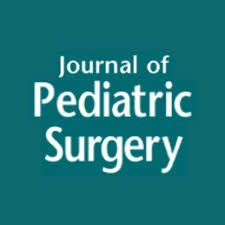Highlights of 2020s 1st Quarter Minimally-Invasive Publications
 Highlights of 2020s 1st Quarter Minimally-Invasive Publications
Highlights of 2020s 1st Quarter Minimally-Invasive Publications
Ahmed Refaat
 Partial duodenal obstruction: A new technique
Partial duodenal obstruction: A new technique
Goring J, Isoldi S, Sharma S, Torroni F, Marven S, De Angelis P, Thomson M. Natural orifice endoluminal technique (NOEL) for the management of congenital duodenal membranes. J Pediatr Surg. 2020 Feb;55(2):282-285. doi:10.1016/j.jpedsurg.2019.10.025
The traditional management of partial congenital duodenal obstructions has typically been an open or laparoscopic diamond-shaped dudenodudeostomy. The combined team from Sheffield led by Sean Marven and Mike Thomson have described an alternative. This involved a Natural Orifice EndoLuminal (NOEL) technique whereby membranes/webs/diaphragm in 15 infants were treated over a 10-year period. Sometimes it was simply balloon dilatation but others involved membrane incision. The success rate was reported as 80% which is some encouragement to those averse to more invasive surgery. anomaly.
 Liver retraction during lap fundoplication: is there a difference?
Liver retraction during lap fundoplication: is there a difference?
T, Nagai T, Yano K. et al. Differential advantage of liver retraction methods in laparoscopic fundoplication for neurologically impaired patients: a comparison of three kinds of procedures. Pediatr Surg Int 36, 591–596 (2020). https://doi.org/10.1007/s00383-020-04646-8.
Adequate liver retraction is essential to achieve good exposure of the gastroesophageal junction and retroesophageal window in a laparoscopic fundoplication. Harumatsu et al. Kagoshima University in Japan compared three techniques over a 13 year period: a “snake” (aka Nathanson) retractor, a crural suture technique using a 3/0 monofilament and direct insertion of another 2.4mm needle grasper to grasp the diaphragm and elevate the left lobe of liver.
 They concluded that the most convenient technique was the needle grasper as it doesn’t require high degree of skill though the crural suture technique seems to be the least damaging to the liver but required higher skills. This is a pseudo-scientific paper and how much value can be ascribed to a non-randomised retrospective study involving only 43 children when the key outcome is entirely subjective I am not sure. The best option should be the one most convenient for the surgeon so get familiar with one technique and master it!
They concluded that the most convenient technique was the needle grasper as it doesn’t require high degree of skill though the crural suture technique seems to be the least damaging to the liver but required higher skills. This is a pseudo-scientific paper and how much value can be ascribed to a non-randomised retrospective study involving only 43 children when the key outcome is entirely subjective I am not sure. The best option should be the one most convenient for the surgeon so get familiar with one technique and master it!
Spaced education: A new technique for learning laparoscopic skills.
Boettcher J, Klippgen L, Mietzsch S, Grube F, Krebs T, Bergholz R, Reinshagen K, Boettcher M. Spaced education improves the retention of laparoscopic suturing skills: a randomized controlled study. Eur J Pediatr Surg. 2020 Apr;30(2):193-200. doi: 10.1055/s-0039-1681022.
What is the optimal training method to learn a certain skill e.g. laparoscopic suturing? “Spaced Learning” consists of blocks with highly condensed content that is repeated three times and interrupted by 10 to 20 minute breaks during which distractor activities, such as physical activity, are performed. The concept is based on the temporal pattern of stimuli for creating long-term memories.
A team from Hamburg, Germany compared Spaced Learning to traditional methods. They randomized 20 students to either teaching method and got them to learn a variety of laparoscopic techniques such as knot tying and evaluated them in a quasi-scientific manner (e.g. Muresan scale for knots) at the end of a week and amazingly at the end of the year. They found that the spaced learning cohort were superior in most tests to the control group regarding speed, accuracy and long-term acquisition of these motor skills resulting in improved confidence and motivation. Fascinating!
Ahmed Refaat
Assistant Lecturer of Pediatric Surgery
Zagazig University Hospitals
Egypt
Curated by Mark Davenport
